‘Lesbian visibility in football often means blurred lines’
In a guest blog for Lesbian Visibility Week, women’s football writer Sophie Lawson discusses the dilemmas for media around LGBT+ representation and relationships…

I knew I was a lesbian before I knew what the word lesbian meant.
Indeed, I think my first encounter with ‘the L-word’ was in an early episode of Friends. My coming out story is a rather pedestrian one, but I was fortunate enough to be met with no ill-feeling from my own friends or family.
Yet as an introverted lesbian, I never felt like I had much connection to the gay community. I had a handful of heterosexual friends that were always keen to go to gay clubs (fake IDs permitting), but I knew the crush of bodies and overindulgent bass wasn’t my scene – regardless of the sexual identity of those within the four walls.
Growing up through the 1990s and 2000s, I was lucky enough that there was a smattering of television shows with lesbian and queer characters. Quickly, I learned the TV and movie tropes for lesbians – either inexplicable death, or a happily-ever-after with a man.
Throughout a life spent in London, my friends group had inexplicably remained largely heterosexual. Other than endeavouring to watch every lesbian film every made (an endless pursuit), there was little in my life that would denote my sexuality. Clubs had never been my thing, and the thought of attending Pride would spark a war between claustrophobia and agoraphobia within me.
So when I found myself at my first women’s football match in my mid-20s, the sudden sense of community hit me like a freight train. I learned fast that from fans to players, coaches and even media, women’s football was an open and accepting place. Not every fan, player and coach identified was queer (or lesbian, bisexual, pansexual – simply, anything that wasn’t heterosexual) but the acceptance was threaded and woven through each facet of the game.
The game was still in its early phases of professionalism and still had an open and naïve air to it. Fans knew almost too much about the players, not least who was dating who. By that first match, I had memories of reading Casey Stoney’s coming out story in 2014 and expecting her, like me, to be in the minority – the one lesbian in her class at school, or the equivalent.
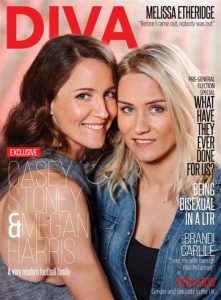
Yet as I got drawn deeper into the sport, I understood she was the minority in that she was out – but that ‘out’ had different meanings in the sport. It consisted of different levels.
As Danielle Warby wrote in The Guardian in 2018, social media is changing what coming out looks like. Sometimes you have to read between the lines and other times, you just need to scroll through a player’s Instagram. For the article, Warby spoke to Australia international Chloe Logarzo who considered herself an out sportswoman even though she’d never ‘officially’ come out in professional circles.
Given the intimate atmosphere that still pervades at most women’s football matches – the smaller crowd sizes and willingness of players to stop and sign autographs post-game – the lines are forever blurred. Those within women’s football know that Player Y is in a relationship with Player X, that both are all over each other’s social media, but without either having explicitly come out.
The women’s game is changing fast, and with bigger and bigger sums being brought into the game, sponsors can have a big say in an individual’s livelihood. There are plenty of good reasons for not coming out as a queer footballer, even before we acknowledge that everyone should be allowed a private life. One of the biggest problems I’ve seen in the women’s game, given the large queer fanbase, is those who unintentionally out players because they didn’t join up the dots and realise a player didn’t want to publicly be out.
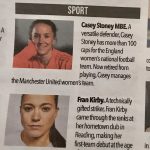
For Lesbian Visibility Week, DIVA Magazine has released a ‘Visible Lesbian 100’ list which also went out in print via a supplement in The Guardian on Monday. Like other DIVA lists, it was driven by their readership who could submit names. There are seven current and former footballers included – but not all of them are out to an ‘official’ level.
For example, if you scroll back through Jill Scott’s Instagram account, you’ll find a picture posted in mid-March of a hand wearing a ring, holding a cup of coffee. The caption contains heart and ring emojis and tags in her partner, Shelly Unitt.
Scott has mentioned her partner in interviews before, such as when talking to the Daily Telegraph after being made an MBE in the New Year’s Honours. However, for any media outlet that wants to talk about LGBT+ representation in women’s football, there is a dilemma. Does all this mean Scott is now ‘fully’ out? Is it responsible to reference her sexuality without confirming? Should she be included in a list of visible, out athletes?
There’s no question growing up queer is made easier when there are other visible LGBT+ people in the public eye, but in our rush to celebrate those who are out and to hold them up in media so we can see ourselves represented, we too often force individuals to be more out than they would like. Last December, a WSL player appeared to announce she was in a relationship with a team-mate in a national newspaper; the original article has since been edited with that line removed. Their relationship was no secret within the women’s football community and the line in the piece wasn’t a surprise for those who’d been paying attention. However, when the same publication attempted to interview the player’s partner, she refused, citing the article that had outed them.
When Stoney made the decision to come out publicly six years ago – even though her sexuality and relationship with former team-mate Megan Harris was well-known in women’s football circles – she did so consciously. As Warby talked about in her article, the nature of coming out is changing – but for me, we still have to remain mindful of the degrees of being out. There are women footballers who routinely come up in lists, but who haven’t formally acknowledged their visibility, and some who specifically haven’t come out on a public level.
That’s something we too often fail to respect.
Sophie Lawson is a freelance writer and journalist specialising in women’s football. You can follow her on Twitter at @lawson_sv.
Further reading…
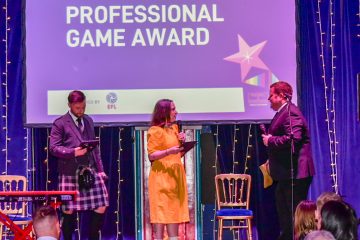
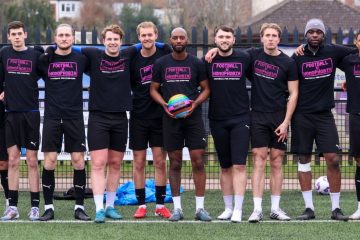
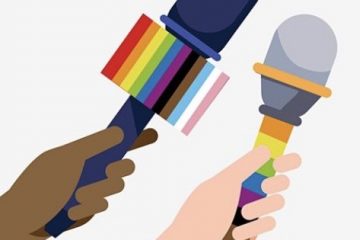
1 Comment
Sports Media LGBT+ in 2020 - Sports Media LGBT+ · 01/05/2020 at 1:25 pm
[…] Jo Currie: Lesbian visibility matters in sports media (24 April); ‘Lesbian visibility in football often means blurred lines’ (22 […]
Comments are closed.